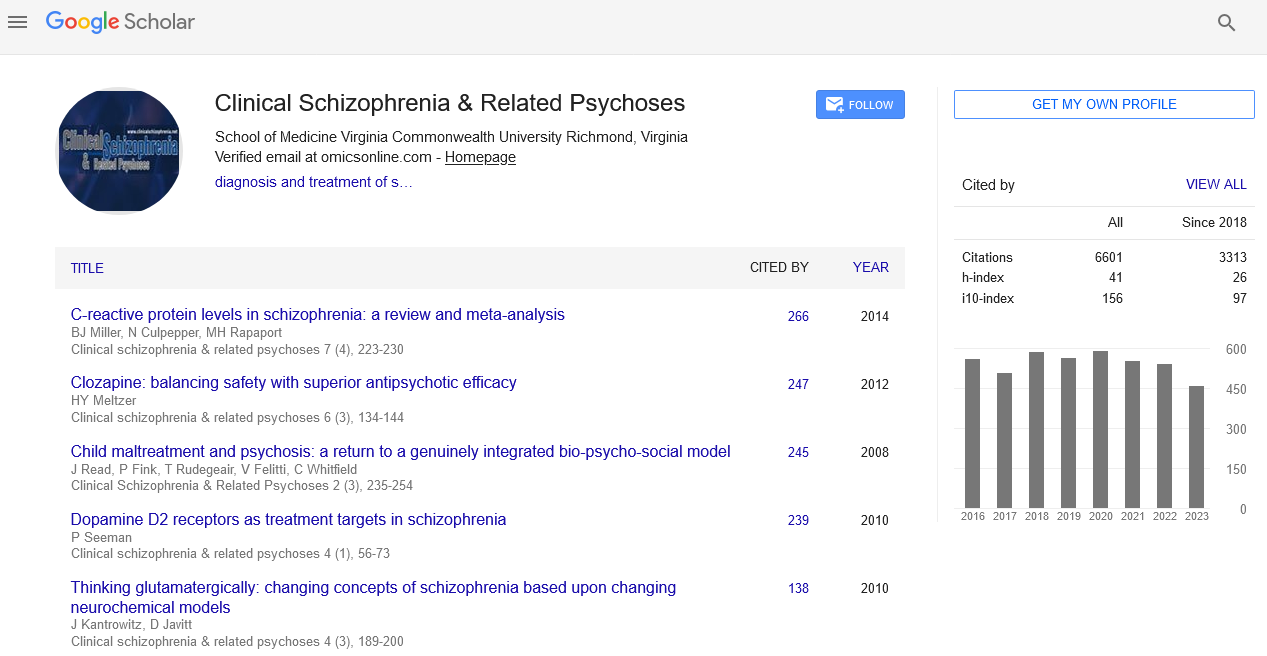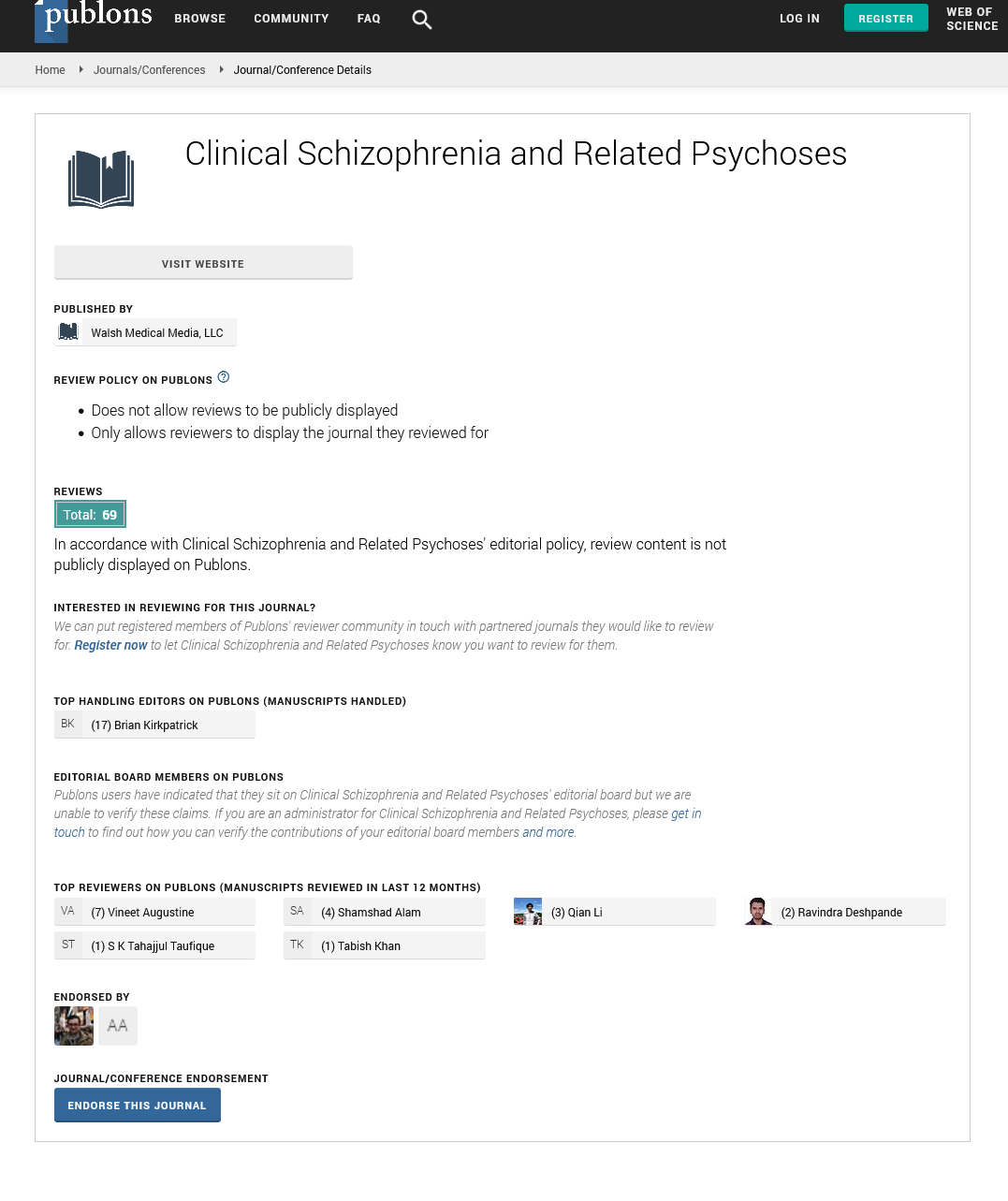Abstract
Clozapine for Treatment-Resistant Schizophrenia: National Institute of Clinical Excellence (NICE) Guidance in the Real World
Author(s): Ann M. Mortimer , Praveen Singh , Charles J. Shepherd , Junais PuthiryackalIntroduction: Clozapine, a poorly tolerated antipsychotic drug, is widely recognized as the only efficacious option in treatment-resistant psychosis. The United Kingdom (U.K.) National Institute of Clinical Excellence (NICE) guidance for its consideration defined a threshold for treatment resistance substantially more liberal than that utilized in seminal studies of efficacy. This study documented adherence to NICE guidance in a patient group likely to be enriched for treatment resistance: 150 consecutive assertive outreach and former rehabilitation inpatients. Evidence of a NICEcompliant treatment trial was adduced from case notes: treatment resistance was determined through discussion with key workers about ongoing clinical problems, including treatment-resistant patients already on clozapine. Reasons for treatment-resistant patients not receiving clozapine were documented. Levels of ongoing clinical problems were compared between treatment-resistant patients on clozapine, treatment-resistant patients not on clozapine, and nontreatment-resistant patients. Results: Patients’ mean age was 41, with illness duration of 16 years. Twelve percent (18 patients) had not had a NICE-compliant trial of treatment, but all 3 treatment-resistant patients in this subgroup were on clozapine already. Forty-five percent of the whole group was treatment resistant: 54% of the treatment-resistant group was treated with clozapine. Of the remaining 46% (i.e., 31 treatment-resistant patients not taking clozapine), 16 refused and 15 could not be treated for medical reasons including the failure of previous trials and neutropenia. Levels of ongoing clinical problems were generally similar between clozapine-treated patients and nontreatment-resistant patients, with significantly greater problems in treatment-resistant patients not taking clozapine. However, positive symptoms remained relatively high in the clozapine group, while substance abuse was actually lower than in the other two groups, and there were no differences between any of the groups in depression and suicide risk. Conclusions: Tertiary referral assertive outreach and rehabilitation services include a higher proportion of treatment-resistant patients than secondary services, as appropriate. Most patients receive a NICE-compliant trial for the determination of pharmacological treatment resistance, but only just over half of the patients who need clozapine on clinical grounds are taking it. While half of these refuse, the rest encounter insuperable obstacles to treatment. In general, clozapine reduces levels of ongoing clinical problems to those of nontreatment-resistant patients. In view of the difficulties of delivering clozapine to treatment-resistant patients, the development of treatment resistance should be avoided if possible.






